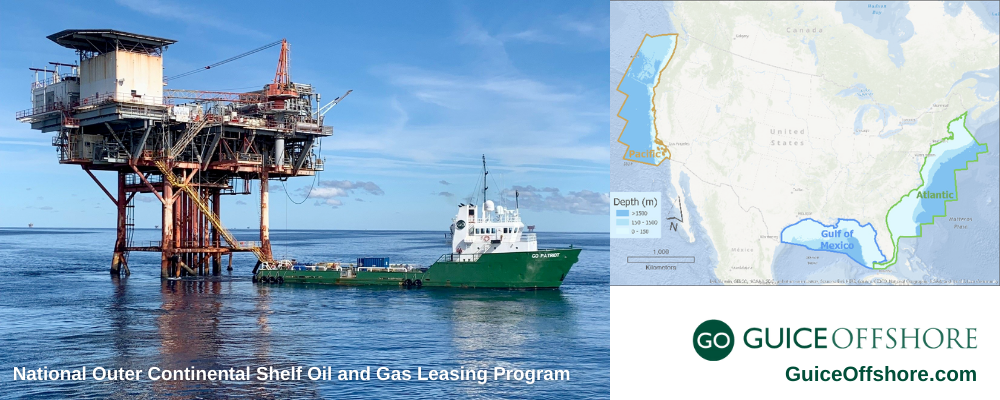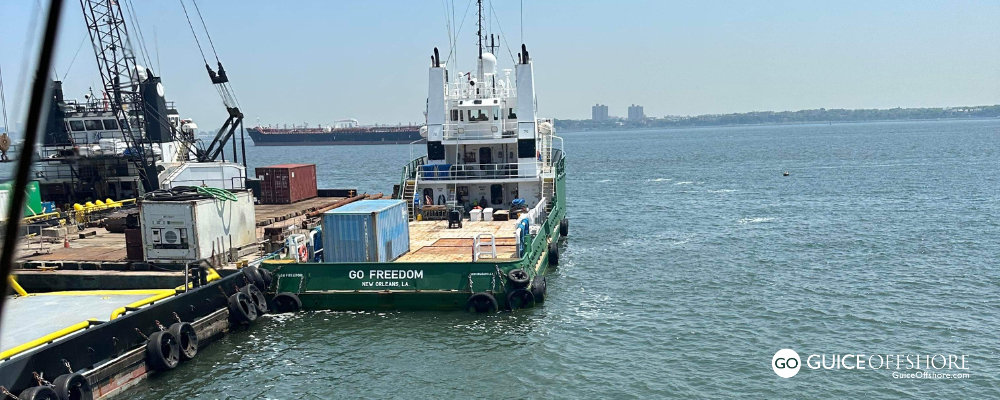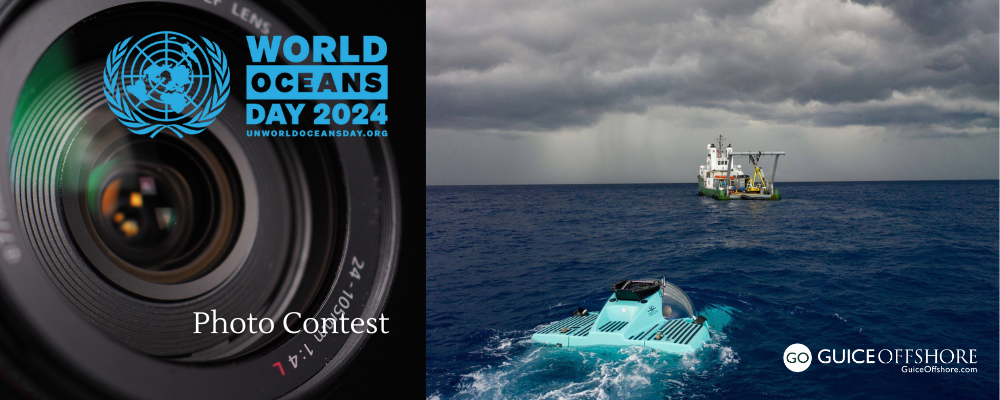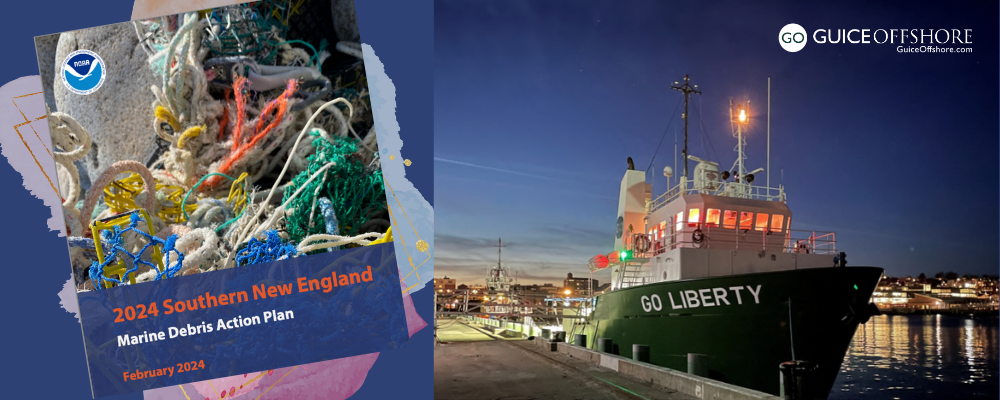Bureau of Ocean Energy Management Schedules Four Meetings In August To Receive Public Input
As the second step in a three-step planning process, the U.S. Department of the Interior issued the Proposed Program for the National Outer Continental Shelf Oil and Gas Leasing Program (National OCS Program) for years 2023-2028, as well as the Draft Programmatic Environmental Impact Statement for the 2023-2028 Program (Draft PEIS) for public comments.
Guice Offshore, whose vessels serve both the oil and gas industry and specialty markets, is advising that today, July 8, 2022, the Notice of Availability (NOA) corresponding to the Proposed Program published in the Federal Register, which initiates a 90-day public comment period that closes on Thursday, October 6, 2022. Those wishing to submit input or participate in the scheduled public meetings can access the instructions through the hyperlinks below.
Release of the Proposed Program follows the 2018 publication of the Draft Proposed Program (DPP) and is the second of three required steps before the Secretary of the Interior can approve the Final Program.
The DPP released in 2018 by the previous administration proposed 47 lease sales across 25 of 26 OCS planning areas. Under the Proposed Program, the Secretary significantly narrowed the area considered for leasing to the Gulf of Mexico and Cook Inlet where there is existing production and infrastructure.
Inclusion of an area or a potential lease sale in the Proposed Program does not mean that it will be included in the final National OCS Program. However, any area or sale not included in the Proposed Program will not be considered for inclusion in the final 2023–2028 National OCS Program.
“Based on my team’s work and my direction, the Department of the Interior is inviting the public to comment on a proposed offshore leasing program that will chart our course forward over the next five years. This is the second step in a three-step planning process to determine whether or how many offshore oil and gas lease sales to hold over the next five years. The proposed plan puts forward several options from no lease sales up to 11 lease sales over the next five years. Like the current program finalized in 2016, it removes from consideration the federal waters off the Atlantic and Pacific coasts while inviting public comment on 10 potential sales in the Gulf of Mexico and one in the Cook Inlet off south-central Alaska. A Proposed Program is not a decision to issue specific leases or to authorize any drilling or development,” said Secretary of the Interior Deb Haaland. “From Day One, President Biden and I have made clear our commitment to transition to a clean energy economy. Today, we put forward an opportunity for the American people to consider and provide input on the future of offshore oil and gas leasing. The time for the public to weigh in on our future is now.”
Following publication of the DPP during the previous administration, the Bureau of Ocean Energy Management (BOEM) considered more than 2 million comments from the public and stakeholders, including governors, federal agencies, state agencies, local agencies, energy and non-energy industries, Tribal governments, non-governmental organizations including environmental advocacy groups, and the public.
Four virtual meetings have been scheduled by the Bureau of Ocean Energy Management (BOEM) to receive public input. These meetings are open-house style where participants can speak live with BOEM staff to get their questions answered, as well as to provide written comments.
- Tuesday, Aug 23
- Thursday, Aug 25
- Monday, Aug 29
- Wednesday, Aug 31
To see meeting times and how to register, click on the “Virtual Meeting Room” tab here. Click on the “How to Comment” tab for directions on how to comment on the Proposed Program and Draft PEIS.
All materials – including the Proposed Program, a map of the program areas, directions for commenting on the Proposed Program and Draft PEIS, and information on how to register for the upcoming virtual meetings, can be found on BOEM’s website or listed below:
- Notice of Availability of the 2023-2028 National OCS Program and Draft PEIS
- Proposed Program for 2023-2028
- Draft PEIS for 2023-2028
Supplemental Information
- U.S. OCS GOM Region Oil and Gas Production Forecast 2022-2031
- Draft Economic Analysis Methodology for the 2023-2028 National Outer Continental Shelf Oil and Gas Leasing Program
Next Steps for the 2023-2028 Program
The Proposed Program includes no more than ten potential sales in the Gulf of Mexico (GOM) and one potential lease sale in the northern portion of the Cook Inlet Planning Area offshore Alaska, which is the same as in the Five-Year Program finalized in 2016. These potential lease sales, including in the GOM, could be further refined and targeted, based on public input and analysis, prior to program approval. The Final Program also may include fewer potential lease sales, including no lease sales.
Following this opportunity for public comment, BOEM will prepare a Proposed Final Program and Final PEIS, which will include analysis of the size, timing, location, and number of potential lease sales in the Proposed Program. Those may be further narrowed or areas could be excluded. There is then a minimum 60-day period before the Secretary can approve the program and finalize the Record of Decision.
Outer Continental Shelf Lands Act
The federal government cannot conduct offshore lease sales without the development and approval of a Final Program consistent with Section 18 of the Outer Continental Shelf Lands Act (OCSLA). OCSLA authorizes the Secretary of the Interior to establish a schedule of lease sales for a five-year period by balancing specific factors of OCS regions and selecting the size, timing, and location of OCS lease sales that best meet regional and national energy needs and considers the impact of oil and gas exploration on the marine, coastal, and human environments. There is no requirement under OCSLA that mandates any sales in any locations, nor does the law prescribe any specific timing for the development of a five-year plan.
When approving a National OCS Program, the OCS Lands Act requires the Secretary to consider eight factors, including:
- Geographical, geological, and ecological characteristics of the OCS regions.
- Equitable sharing of developmental benefits and environmental risks among regions.
- The relative needs of national and regional energy markets.
- Other uses of ocean resources and the OCS.
- Expressed industry interest in oil and gas development.
- Laws, goals and policies of affected states as identified by governors.
- Environmental sensitivity and marine productivity of different areas of the OCS.
- Environmental and predictive information for different areas of the OCS.
The Proposed Program reflects the Secretary’s careful consideration of these factors.
How Guice Offshore Supply Vessels Serve the Oil and Gas Industry
Guice Offshore’s (GO) fleet of support vessels provide a necessary and critical component of the offshore oil exploration and gas production (E&P) environment and are utilized in almost every phase of the extraction process from survey and drilling to production and abandonment. Guice Offshore maintains a strong presence in the northern Gulf of Mexico E&P sector. Our hard-working vessels are most often employed in support of Platform and Pipeline Operations (production activities, logistics, diving, ROV, inspection, maintenance, repair, plug and abandonment), however we also participate in certain early phases of the process like surveying.



